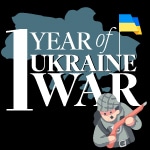However, hours after the announcement, Russia said it would abide by the sanctions imposed by the New START treaty. Russia’s Foreign Ministry said in a statement, “Russia intends to adhere to a responsible approach and will continue to strictly adhere to the quantitative restrictions on strategic offensive weapons set by it (New START) within the life cycle of the treaty.” ”
The treaty, the last nuclear arms control agreement between the world’s two main nuclear powers, was extended until early 2026. The foreign ministry said Putin’s decision came after “disastrous actions” by the United States, which it accused of violating the accord. The first was signed in 2010. The ministry pointed to Washington’s “extreme hostility” and “open course of malicious escalation of the conflict in Ukraine”, where Russia is waging a military operation.
Some key facts about the treaty signed by former US President Barack Obama in 2010, according to an AFP report:
2010 ‘Reset’
The accord, signed by Obama and then-Russian President Dmitry Medvedev in 2010 in the Czech capital Prague, was part of Obama’s push to “reset” ties with the Kremlin.
Obama’s successor, Donald Trump, was hesitant to raise it, saying any nuclear deal must also include China, whose stockpiles are growing rapidly.
Upon taking office, President Joe Biden extended it for five years until 2026, with his administration noting that the treaty was meant to “make the world safer”.
30 percent less warhead
The accord limits the former Cold War rivals to a maximum of 1,550 deployable warheads, about 30 percent less than the limit set in 2002, and 800 launchers and bombers – still enough to sweep the globe several times over.
The treaty also provides for a series of mutual onsite inspections, a cornerstone of former US President Ronald Reagan’s arms control mantra of “trust but verification”.
Ukraine ‘poisoning’
Russia’s invasion of Ukraine a year earlier dealt a serious blow to the treaty, with Putin issuing thinly-veiled threats to use nuclear weapons and leading the US to arm Ukraine and punish Moscow for its aggression. .
Moscow announced in August 2022 that it was suspending US inspections of its military sites, claiming that the United States was obstructing visits to its facilities, which Washington denied.
Russia has indefinitely suspended negotiations under the treaty to be held in Cairo, accusing the United States of “toxicity and hostility”.
In January, the United States accused Russia of non-compliance with the treaty.
Russia’s ambassador to the United States replied that Moscow was “impeccably following” the agreement and that responsibility for the escalation rested “entirely with Washington”.
final settlement
The New START agreement is the last post-Cold War arms control agreement between Moscow and Washington.
In 2019 the two powers scrapped the 1989 Intermediate-Range Nuclear Forces (INF) treaty concluded by Reagan and Soviet leader Mikhail Gorbachev, which limited the use of intermediate-range missiles, both conventional and nuclear.
A year later, Trump also pulled the US out of the “Open Skies” treaty, which allows unarmed surveillance flights over participating countries in Europe, the former Soviet Union and North America.
Trump accused Russia of repeated violations of the treaty, which Moscow denied. Russia also later withdrew from the deal.
What was the Cold War?
Afterwards World The Second War, the Cold War, was a period of geopolitical tension between the Soviet Union and its satellite governments (Eastern European countries) and the United States and its allies (Western European countries).
After WWII, the world was divided into two power blocs, each dominated by two superpowers, the Soviet Union and the United States. The ideological struggle between the capitalist United States and the communist Soviet Union was the primary focus of the two superpowers.
The term “cold” refers to the lack of large-scale fighting between the two sides.
with inputs from afp
read all latest explainer Here



